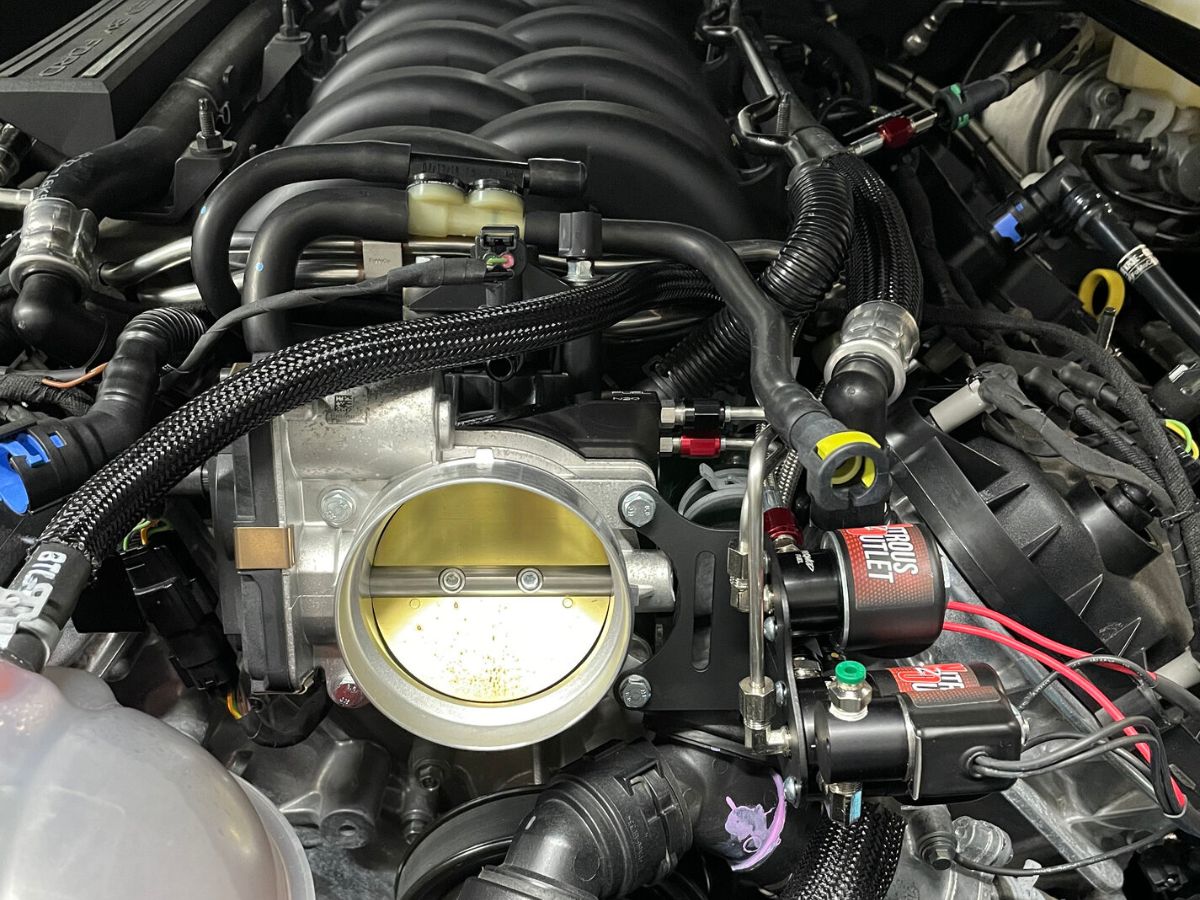As a car owner, it's essential to understand the various components that keep your vehicle running smoothly and efficiently. One such component is the purge valve, which plays a crucial role in your car's evaporative emission control system (EVAP). In this article, we'll dive deep into what a purge valve does, its importance, and how to identify and address potential issues.
The Role of a Purge Valve in Your Car's EVAP System
The purge valve, also known as the canister purge valve, is a key component of your car's EVAP system. Its primary function is to manage the flow of fuel vapors from the charcoal canister to the engine's intake manifold. By doing so, the purge valve helps prevent harmful fuel vapors from escaping into the atmosphere, thus reducing pollution and ensuring your car meets emission standards.
How Does a Purge Valve Work?
The purge valve operates using a solenoid, which is controlled by the engine control module (ECM). When the engine is running, the ECM sends a signal to the purge valve to open, allowing the vacuum created by the engine to draw fuel vapors from the charcoal canister into the intake manifold. These vapors are then burned during the combustion process, reducing emissions and improving fuel efficiency.
The Importance of a Properly Functioning Purge Valve
A properly functioning purge valve is crucial for several reasons:
- Emission control: By preventing fuel vapors from escaping into the atmosphere, the purge valve helps reduce pollution and ensures your car complies with emission regulations.
- Fuel efficiency: When fuel vapors are drawn into the engine and burned during combustion, your car's fuel efficiency improves, saving you money at the gas pump.
- Engine performance: A faulty purge valve can lead to an imbalanced air-fuel mixture, causing rough idling, reduced power, and increased fuel consumption.
Symptoms of a Faulty Purge Valve
Knowing the signs of a faulty purge valve is essential for maintaining your car's performance and avoiding costly repairs. Here are some common symptoms to watch out for:

Check Engine Light
One of the most common indicators of a faulty purge valve is the illumination of the check engine light. When the ECM detects an issue with the EVAP system, it triggers the check engine light to alert the driver.
Rough Idle or Stalling
A malfunctioning purge valve can cause an imbalanced air-fuel mixture, leading to rough idling or stalling. If you notice your car's engine running roughly or stalling frequently, it's time to have the purge valve inspected.
Difficulty Starting
If the purge valve is stuck open, it can allow excess fuel vapors to enter the engine, making it difficult to start the car. This is especially noticeable when the engine is cold or after refueling.
Reduced Fuel Efficiency
A faulty purge valve can lead to an increase in fuel consumption, as the engine may be running too rich or too lean due to an improper air-fuel mixture.
Failed Emission Tests
If your car fails an emission test, a malfunctioning purge valve could be the culprit. A stuck-open purge valve can allow fuel vapors to escape, while a stuck-closed valve prevents the vapors from being burned in the engine, both of which can cause your car to fail the test.
Diagnosing and Fixing a Faulty Purge Valve
If you suspect your car's purge valve is malfunctioning, it's essential to have it diagnosed and repaired promptly to avoid further damage and ensure your car runs efficiently.
Diagnostic Steps
- Scan for trouble codes: Using an OBD-II scanner, check for any trouble codes related to the EVAP system or purge valve.
- Perform a smoke test: A smoke test can help identify leaks in the EVAP system, which may be caused by a faulty purge valve.
- Test the purge valve: Using a multimeter or a vacuum gauge, test the purge valve's electrical and mechanical functionality.
Repair Options
If the purge valve is found to be faulty, there are two main repair options:
- Cleaning: In some cases, a clogged or stuck purge valve can be cleaned using a carburetor cleaner or specialized valve cleaning solution.
- Replacement: If cleaning does not resolve the issue or the purge valve is damaged beyond repair, replacement is necessary. Purge valve replacement is typically a straightforward process that can be performed by a skilled mechanic or an experienced DIY enthusiast.
Preventing Purge Valve Issues
To minimize the risk of purge valve issues and maintain your car's EVAP system, follow these preventive measures:
- Regular maintenance: Adhere to your car's recommended maintenance schedule, including regular tune-ups and inspections.
- Use high-quality fuel: Choose high-quality gasoline from reputable gas stations to reduce the buildup of contaminants in the EVAP system.
- Address leaks promptly: If you suspect a leak in the EVAP system, have it inspected and repaired immediately to prevent damage to the purge valve and other components.
Frequently Asked Questions
Can I drive with a faulty purge valve?
While it's possible to drive with a faulty purge valve, it's not recommended. A malfunctioning purge valve can lead to reduced fuel efficiency, poor engine performance, and increased emissions. It's best to have the issue addressed as soon as possible.
How often should I replace my car's purge valve?
There is no specific maintenance schedule for purge valve replacement. Most purge valves are designed to last the lifetime of the vehicle. However, if you encounter any symptoms of a faulty purge valve, have it inspected and replaced if necessary.
Can a faulty purge valve cause my car to fail an emission test?
Yes, a malfunctioning purge valve can cause your car to fail an emission test. A stuck-open purge valve can allow fuel vapors to escape, while a stuck-closed valve prevents the vapors from being burned in the engine, both of which can result in higher emissions.
Is it expensive to replace a purge valve?
The cost of replacing a purge valve varies depending on the make and model of your car, as well as labor costs. On average, purge valve replacement can cost between $100 and $300, with parts typically ranging from $50 to $150.
Can I replace a purge valve myself?
Replacing a purge valve is a relatively straightforward process that can be performed by an experienced DIY enthusiast. However, if you're not confident in your mechanical skills, it's best to have the replacement performed by a professional mechanic to ensure proper installation and function.
Summary
- The purge valve is a crucial component of a car's EVAP system, responsible for managing the flow of fuel vapors from the charcoal canister to the engine's intake manifold.
- A properly functioning purge valve helps reduce pollution, improve fuel efficiency, and maintain optimal engine performance.
- Common symptoms of a faulty purge valve include a check engine light, rough idle or stalling, difficulty starting, reduced fuel efficiency, and failed emission tests.
- Diagnosing a faulty purge valve involves scanning for trouble codes, performing a smoke test, and testing the valve's electrical and mechanical functionality.
- Repair options for a faulty purge valve include cleaning or replacement, depending on the severity of the issue.
- Regular maintenance, using high-quality fuel, and addressing leaks promptly can help prevent purge valve issues.
By understanding what a purge valve does and how to identify and address potential issues, you can keep your car running smoothly, efficiently, and in compliance with emission regulations. If you suspect a problem with your car's purge valve, don't hesitate to have it inspected by a professional mechanic to ensure the longevity and performance of your vehicle.




Leave a comment
This site is protected by hCaptcha and the hCaptcha Privacy Policy and Terms of Service apply.